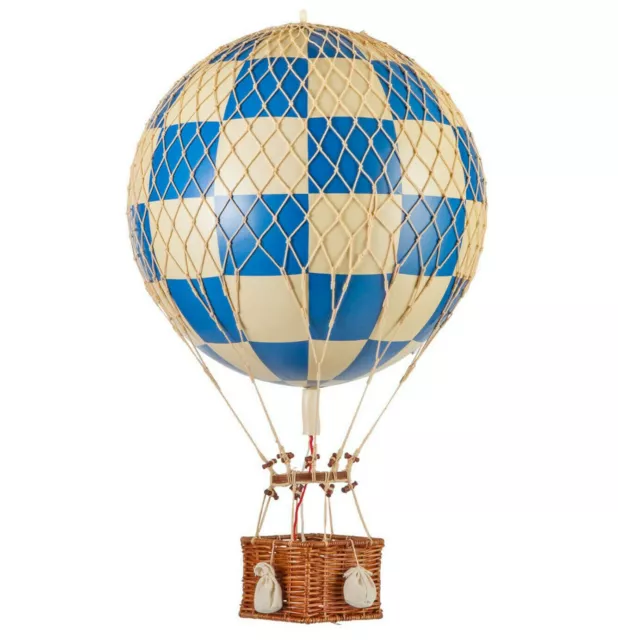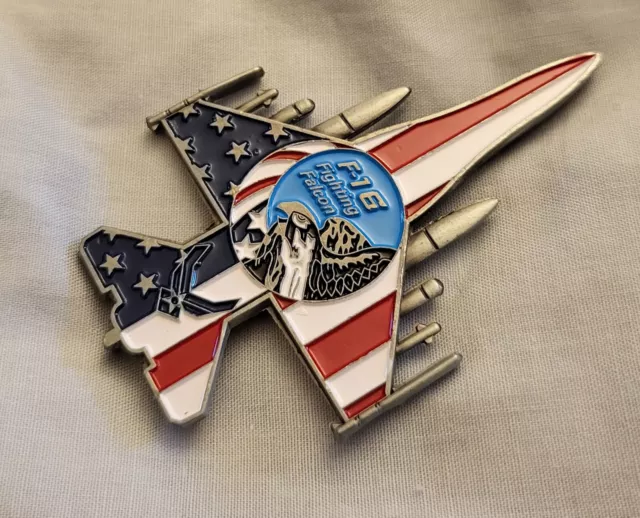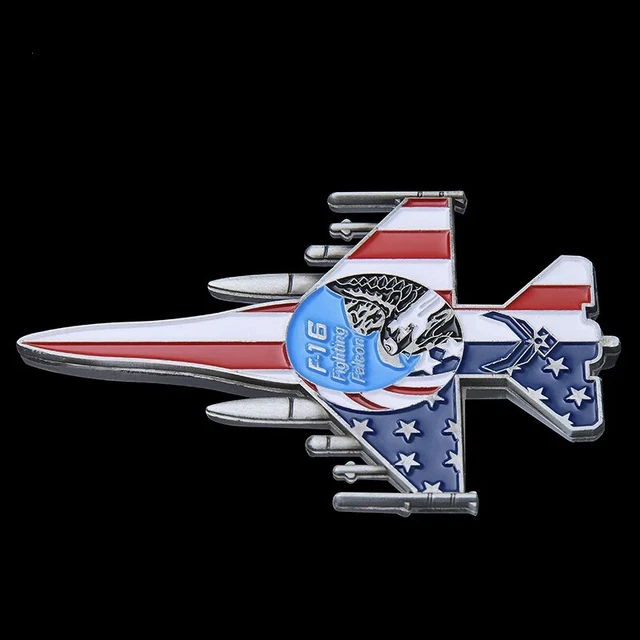F16 Silver World Plane US Air Force I Military War History Combat Aviation Coin
| F16 War Plane Coin This is a Silver Plated F-16 Plane Coin The top side has a US Flag with a Fighting Falcon logo of the F16 The other side has the underside of a plane The dimensions are 70mm x 50mm x 5mm It is solid metal and it weighs 33 grams In Excellent Condition A Beautiful coin and Magnificent Keepsake Souvenir Sorry about the poor quality photos. They dont do the item justice which looks a lot better in real life Check out my other items ! All Payment Methods in All Major Currencies Accepted. XXXX - DO NOT CLICK HERE - XXXX Click Here to Add me to Your List of Favourite Sellers All Items Dispatched within 24 hours of Receiving Payment .Thanks for Looking I have sold items to coutries such as Afghanistan * Albania * Algeria * American Samoa (US) * Andorra * Angola * Anguilla (GB) * Antigua and Barbuda * Argentina * Armenia * Aruba (NL) * Australia * Austria * Azerbaijan * Bahamas * Bahrain * Bangladesh * Barbados * Belarus * Belgium * Belize * Benin * Bermuda (GB) * Bhutan * Bolivia * Bonaire (NL) * Bosnia and Herzegovina * Botswana * Bouvet Island (NO) * Brazil * British Indian Ocean Territory (GB) * British Virgin Islands (GB) * Brunei * Bulgaria * Burkina Faso * Burundi * Cambodia * Cameroon * Canada * Cape Verde * Cayman Islands (GB) * Central African Republic * Chad * Chile * China * Christmas Island (AU) * Cocos Islands (AU) * Colombia * Comoros * Congo * Democratic Republic of the Congo * Cook Islands (NZ) * Coral Sea Islands Territory (AU) * Costa Rica * Croatia * Cuba * Curaçao (NL) * Cyprus * Czech Republic * Denmark * Djibouti * Dominica * Dominican Republic * East Timor * Ecuador * Egypt * El Salvador * Equatorial Guinea * Eritrea * Estonia * Ethiopia * Falkland Islands (GB) * Faroe Islands (DK) * Fiji Islands * Finland * France * French Guiana (FR) * French Polynesia (FR) * French Southern Lands (FR) * Gabon * Gambia * Georgia * Germany * Ghana * Gibraltar (GB) * Greece * Greenland (DK) * Grenada * Guadeloupe (FR) * Guam (US) * Guatemala * Guernsey (GB) * Guinea * Guinea-Bissau * Guyana * Haiti * Heard and McDonald Islands (AU) * Honduras * Hong Kong (CN) * Hungary * Iceland * India * Indonesia * Iran * Iraq * Ireland * Isle of Man (GB) * Israel * Italy * Ivory Coast * Jamaica * Jan Mayen (NO) * Japan * Jersey (GB) * Jordan * Kazakhstan * Kenya * Kiribati * Kosovo * Kuwait * Kyrgyzstan * Laos * Latvia * Lebanon * Lesotho * Liberia * Libya * Liechtenstein * Lithuania * Luxembourg * Macau (CN) * Macedonia * Madagascar * Malawi * Malaysia * Maldives * Mali * Malta * Marshall Islands * Martinique (FR) * Mauritania * Mauritius * Mayotte (FR) * Mexico * Micronesia * Moldova * Monaco * Mongolia * Montenegro * Montserrat (GB) * Morocco * Mozambique * Myanmar * Namibia * Nauru * Navassa (US) * Nepal * Netherlands * New Caledonia (FR) * New Zealand * Nicaragua * Niger * Nigeria * Niue (NZ) * Norfolk Island (AU) * North Korea * Northern Cyprus * Northern Mariana Islands (US) * Norway * Oman * Pakistan * Palau * Palestinian Authority * Panama * Papua New Guinea * Paraguay * Peru * Philippines * Pitcairn Island (GB) * Poland * Portugal * Puerto Rico (US) * Qatar * Reunion (FR) * Romania * Russia * Rwanda * Saba (NL) * Saint Barthelemy (FR) * Saint Helena (GB) * Saint Kitts and Nevis * Saint Lucia * Saint Martin (FR) * Saint Pierre and Miquelon (FR) * Saint Vincent and the Grenadines * Samoa * San Marino * Sao Tome and Principe * Saudi Arabia * Senegal * Serbia * Seychelles * Sierra Leone * Singapore * Sint Eustatius (NL) * Sint Maarten (NL) * Slovakia * Slovenia * Solomon Islands * Somalia * South Africa * South Georgia (GB) * South Korea * South Sudan * Spain * Sri Lanka * Sudan * Suriname * Svalbard (NO) * Swaziland * Sweden * Switzerland * Syria * Taiwan * Tajikistan * Tanzania * Thailand * Togo * Tokelau (NZ) * Tonga * Trinidad and Tobago * Tunisia * Turkey * Turkmenistan * Turks and Caicos Islands (GB) * Tuvalu * U.S. Minor Pacific Islands (US) * U.S. Virgin Islands (US) * Uganda * Ukraine * United Arab Emirates * United Kingdom * United States * Uruguay * Uzbekistan * Vanuatu * Vatican City * Venezuela * Vietnam * Wallis and Futuna (FR) * Yemen * Zambia * Zimbabwe and major cities such as Tokyo, Yokohama, New York City, Sao Paulo, Seoul, Mexico City, Osaka, Kobe, Kyoto, Manila, Mumbai, Delhi, Jakarta, Lagos, Kolkata, Cairo, Los Angeles, Buenos Aires, Rio de Janeiro, Moscow, Shanghai, Karachi, Paris, Istanbul, Nagoya, Beijing, Chicago, London, Shenzhen, Essen, Düsseldorf, Bogota, Lima, Bangkok, Johannesburg, East Rand, Chennai, Taipei, Baghdad, Santiago, Bangalore, Hyderabad, St Petersburg, Philadelphia, Lahore, Kinshasa, Miami, Ho Chi Minh City, Madrid, Tianjin, Kuala Lumpur, Toronto, Milan, Shenyang, Dallas, Fort Worth, Boston, Belo Horizonte, Khartoum, Riyadh, Singapore, Washington, Detroit, Barcelona,, Houston, Athens, Berlin, Sydney, Atlanta, Guadalajara, San Francisco, Oakland, Montreal, Monterey, Melbourne, Ankara, Recife, Phoenix/Mesa, Durban, Porto Alegre, Dalian, Jeddah, Seattle, Cape Town, San Diego, Fortaleza, Curitiba, Rome, Naples, Minneapolis, St. Paul, Tel Aviv, Birmingham, Frankfurt, Lisbon, Manchester, San Juan, Katowice, Tashkent, Fukuoka, Baku, Sumqayit, St. Louis, Baltimore, Sapporo, Tampa, St. Petersburg, Taichung, Warsaw, Denver, Cologne, Bonn, Hamburg, Dubai, Pretoria, Vancouver, Beirut, Budapest, Cleveland, Pittsburgh, Campinas, Harare, Brasilia, Kuwait, Munich, Portland, Brussels, Vienna, San Jose, Damman , Copenhagen, Brisbane, Riverside, San Bernardino, Cincinnati and Accra |
- Condition: New
- Artist: F16
- Unit of Sale: Single Piece
- Size: Small
- Item Length: 7 cm
- Region of Origin: California, USA
- Format: Statue
- Year of Production: 2023
- Original/Licensed Reproduction: Original
- Item Height: 0.5 cm
- Style: Americana
- Features: 1st Edition
- Unit Quantity: 1
- Culture: F-16
- Item Width: 5 cm
- Handmade: No
- Time Period Produced: 2020-Now
- Signed: No
- Period: Ultra Contemporary (2020 - Now)
- Title: F-16
- Material: Metal
- Certificate of Authenticity (COA): No
- Subject: Military
- Type: Sculpture
- Theme: Americana
- Production Technique: 3D Modeling
- Country/Region of Manufacture: United States
PicClick Insights - F16 Silver World Plane US Air Force I Military War History Combat Aviation Coin PicClick Exclusive
- Popularity - 0 watchers, 0.0 new watchers per day, 2 days for sale on eBay. 0 sold, 1 available.
- Best Price -
- Seller - 3,330+ items sold. 0.3% negative feedback. Great seller with very good positive feedback and over 50 ratings.
People Also Loved PicClick Exclusive

Doug Hyde Is it A Bird, Is It A Plane sculpture
£280.00 Buy It Now 25d 7h
Spark plug plane, aeroplane scrap metal sculpture, airplane, metal art
£18.95 Buy It Now 14d 14h
Vintage Brass Bi-Plane Airplane Sculpture Mid Century Brutalist Art Demott
£30.00 Buy It Now 21d 10h
spark plug spitfire plane + churchill crown base ww2 gift idea iconic airplane
£35.00 Buy It Now 21d 22h
Hot Air Balloon Model Blue & White Check 13" Hanging Aviation Ceiling Home Decor
£107.95 Buy It Now 24d 9h 4 watchers
4 watchers F-16 Silver War Plane Bird Stars & Stripes II US Air Force USAF I Fighter World£12.99 Buy It Now or Best Offer
F-16 Silver War Plane Bird Stars & Stripes II US Air Force USAF I Fighter World£12.99 Buy It Now or Best Offer


